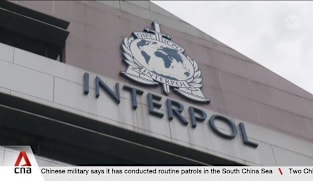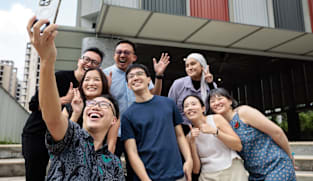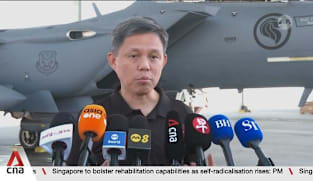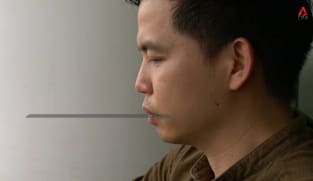Chee Hong Tat on keeping public transport fares affordable
Fares for public transport are based on factors such as core inflation, national wage growth and energy prices. In setting fares, the Public Transport Council (PTC) looks at changes in these cost drivers. It does not focus on the actual salaries paid by public transport operators but looks at the National Wage Index which allows operators to keep public transport sector salaries competitive. Over the past five years, the wages of public transport workers grew at a pace similar to the National Wage Index. The fare formula also includes a productivity contribution, which reduces the allowable fare adjustment by 0.1 percentage point every year. This further incentivises operators to look for continuous productivity improvements to reduce costs and upskill workers. The fare formula therefore avoids passing on directly the operators’ costs to commuters, while allowing commuters to benefit from productivity savings. Acting Transport Minister Chee Hong Tat explained how the PTC works out the allowable fare adjustment to implement each year in reply to questions from MPs in Parliament on Tuesday (Oct 3). He said the PTC also aims to keep public transport fares affordable for commuters and again decided not to grant the full quantum this year. Instead, the PTC decided on an overall fare increase of seven per cent, which is less than a third of the maximum allowable fare increase of 22.6 per cent. The remaining 15.6 per cent will be deferred to future years. To account for this funding gap, the Government will provide S$300 million in additional subsidies this year, which is S$100 million more than the previous year. This amount is on top of the S$2 billion annual subsidies to fund bus and train services. In addition, the cost of public transport infrastructure is fully funded by the Government. Mr Chee said the PTC will continue to ensure that fare adjustments each year are affordable. It will assess the cost increases as reflected by the fare formula, the deferred fare amount from previous years, as well as the impact on affordability for commuters before deciding on the fare increases to be granted for that year. When the opportunity arises, the PTC will consider whether it is possible to lower the total deferred fare amount so that the gap will gradually reduce over time. Mr Chee said the PTC and Government are also mindful that fare increases affect different groups of commuters differently. He said while it is important for commuters to bear their fair share of cost increases, they are committed to ensuring that fares remain affordable, especially for concession groups. Over the past decade, Singapore has enhanced the quality of its public transport system by expanding the network and improving accessibility and reliability of services, said Mr Chee. This has been achieved through the strong tripartite partnership between the Government, public transport operators and workers, while keeping fares affordable and the public transport system financially sustainable, he added.
Fares for public transport are based on factors such as core inflation, national wage growth and energy prices. In setting fares, the Public Transport Council (PTC) looks at changes in these cost drivers. It does not focus on the actual salaries paid by public transport operators but looks at the National Wage Index which allows operators to keep public transport sector salaries competitive. Over the past five years, the wages of public transport workers grew at a pace similar to the National Wage Index. The fare formula also includes a productivity contribution, which reduces the allowable fare adjustment by 0.1 percentage point every year. This further incentivises operators to look for continuous productivity improvements to reduce costs and upskill workers. The fare formula therefore avoids passing on directly the operators’ costs to commuters, while allowing commuters to benefit from productivity savings. Acting Transport Minister Chee Hong Tat explained how the PTC works out the allowable fare adjustment to implement each year in reply to questions from MPs in Parliament on Tuesday (Oct 3). He said the PTC also aims to keep public transport fares affordable for commuters and again decided not to grant the full quantum this year. Instead, the PTC decided on an overall fare increase of seven per cent, which is less than a third of the maximum allowable fare increase of 22.6 per cent. The remaining 15.6 per cent will be deferred to future years. To account for this funding gap, the Government will provide S$300 million in additional subsidies this year, which is S$100 million more than the previous year. This amount is on top of the S$2 billion annual subsidies to fund bus and train services. In addition, the cost of public transport infrastructure is fully funded by the Government. Mr Chee said the PTC will continue to ensure that fare adjustments each year are affordable. It will assess the cost increases as reflected by the fare formula, the deferred fare amount from previous years, as well as the impact on affordability for commuters before deciding on the fare increases to be granted for that year. When the opportunity arises, the PTC will consider whether it is possible to lower the total deferred fare amount so that the gap will gradually reduce over time. Mr Chee said the PTC and Government are also mindful that fare increases affect different groups of commuters differently. He said while it is important for commuters to bear their fair share of cost increases, they are committed to ensuring that fares remain affordable, especially for concession groups. Over the past decade, Singapore has enhanced the quality of its public transport system by expanding the network and improving accessibility and reliability of services, said Mr Chee. This has been achieved through the strong tripartite partnership between the Government, public transport operators and workers, while keeping fares affordable and the public transport system financially sustainable, he added.



















